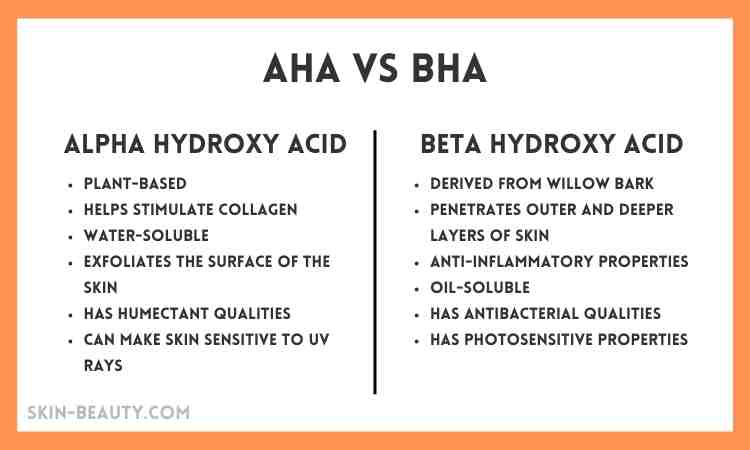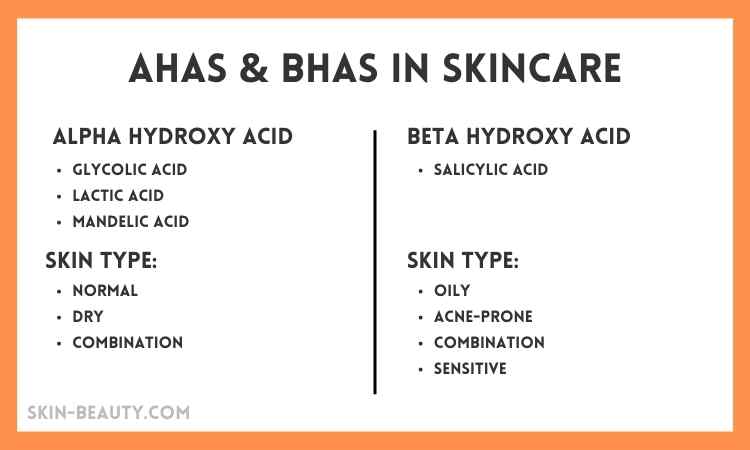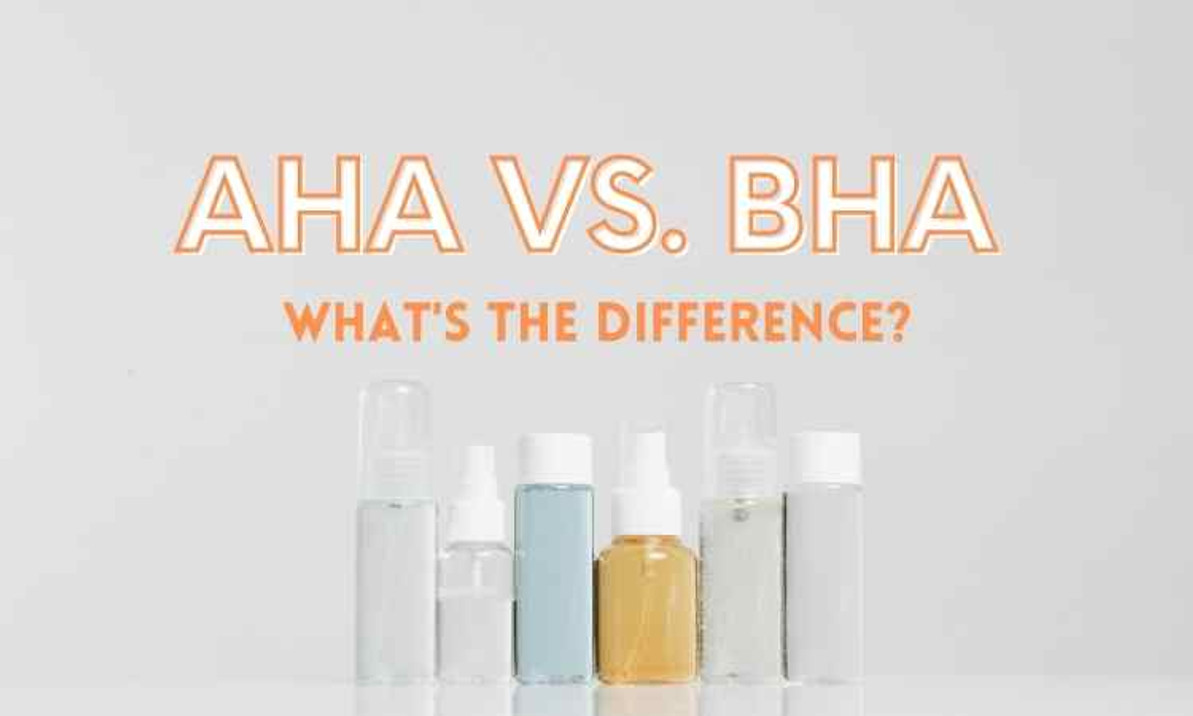AHAs Vs. BHAs: What's the difference?
What are AHAs?
AHAs are also known as alpha-hydroxy acids. They are referred to as fruit acids because they are commonly derived from sugar cane or other plant sources. Popular forms of AHAs include glycolic acid, lactic acid, and citric acid, although AHAs derived from sugar cane (glycolic acid) are the most widely used in skincare. The great thing about AHA's is that they are generally recommended for normal, dry, and sun-damaged skin as they can enhance moisturizing factors.
What are BHAs?
BHAs, or beta-hydroxy acids, are great for normal, oily, and acne-prone skin. The most popular form of BHA is salicylic acid, a popular and common ingredient found in acne skin care products. BHAs are acids that work on the skin's surface and deep inside the poor, making it an excellent ingredient for exfoliating products. This acid is commonly derived from willow bark extract and contains anti-inflammatory and photoprotective properties.

How are BHAs and AHAs different?
Aside from the slight chemical composition, there are a few key differences between BHAs and AHAs.
BHAs penetrate more deeply:
Because AHAs are water-soluble, they cannot get past sebum on the skin, so they can only exfoliate the skin's surface. BHAs are oil-soluble, meaning they can pass through the sebum on our skin to get deep into the pores.
BHAs reduce oil production:
BHAs can slow down sebum secretion, which can help control oily skin.
BHAs are more effective for acne:
Both acids are great exfoliants; when it comes to acne BHAs can work under the skin's surface and deep clean the pores.
BHAs can help "shrink" pores:
Although you can't really "shrink" your pores, BHAs are great in helping pores appear smaller by keeping them clean. Pores can often seem more prominent when they are filled with debris.
AHAs cause photosensitivity:
We have all heard of applying our SPF after using AHAs because they can increase the sensitivity to the sun. BHAs have some photoprotective effects that protect the skin slightly more than AHAs, but it is still essential to apply your SPF!
BHAs are less irritating:
Any acid can irritate or dry the skin if you use the wrong pH concentration or are misusing it. AHAs are more frequently associated with irritation (think glycolic acid). Due to their larger molecule size and anti-inflammatory benefits, BHAs are often gentler on the skin.

Should I use an AHA or BHA?
The choice between AHA and BHA products comes down to your specific skin concerns and skin goals.
Acne-Prone Skin:
BHAs are or acid of choice for acne-prone skin. Salicylic acid is proven to reduce acne and breakouts, so look for 2-4 percent concentrations. Remember that you might experience purging, but that's a good thing!
Oily Skin:
BHAs will be great for reducing sebum production. However, it may take some time to look for the perfect dose for your skin, so starting with 1-2 percent salicylic acid is recommended.
Dry/Sensitive Skin:
An AHA like lactic acid is best for this skin type. Lactic acid is fairly gentle and one of the most hydrating acids.
Pigmentation Issues:
BHAs will work best for hyperpigmentation. This works especially well for darker skin tones since BHAs don't typically cause post-inflammatory hyperpigmentation, causing more dark spots. BHAs also give you SOME photoprotection which is ideal for preventing the creation of new pigment. Of course, don't forget to apply your SPF!

Can I use BHAs and AHAs together?
The short answer is yes but test your products on the skin before committing to them to see how your skin reacts to these products. Most people tend to get a mild reaction to AHAs, specifically glycolic acid. To use them together, you should alternate products using one day and one at night or alternate the days you use them. You can also look for products that contain both AHAs and BHAs in one product; these products are great because you get the benefits of both hydroxy acids and have the perfect ratio of each acid measured out.
Can I use BHAs and AHAs with Vitamin C?
This is one of the MOST frequently asked questions about Alpha and Beta hydroxy acids. We have all heard how using too many can irritate and strip your skin, but there is a way to combine these products properly. Again, the secret is to alternate the use of each product. For example, use your glycolic, lactic, or mandelic acids in the morning and your Vitamin C at night, but don't forget to apply SPF. Both AHA's and Vitamin C increase the skin's sensitivity to UV rays. The same rule applies with BHAs and Vitamin C, alternate use of them.
Recent Posts
-
Peptides For Skin: Exploring the Anti-Aging Benefits of Peptides in Skincare
Exploring the Anti-Aging Benefits of Peptides in Skincare In the universe of advanced skincare, th …Apr 25th 2024 -
Discover the Perfect Glasses & Styles to Enhance Your Rectangle Face Shape!
Your face shape plays a significant role in determining the most flattering hairstyles and makeup te …Apr 17th 2024 -
Moroccanoil Treatment for Hair: The Ultimate Guide
Moroccanoil Treatment for Hair: The Ultimate Guide In the world of hair care, few products have …Apr 1st 2024



